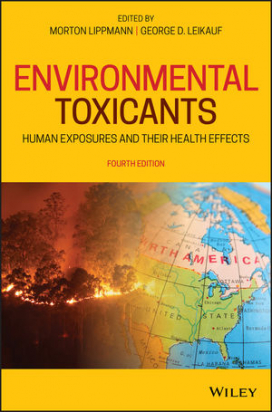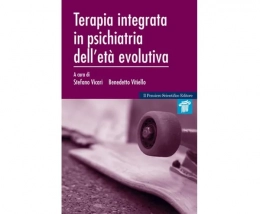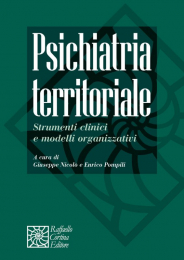Table of contents
Contributors xiii
Preface xvii
1 Introduction and Background 1
1.1 Characterization of Chemical Contaminants 2
1.2 Human Exposures and Dosimetry 7
1.3 Chemical Exposures and Dose to Target Tissues 8
1.4 Concentration of Toxic Chemicals in Human Microenvironments 9
1.5 Inhalation Exposures and Respiratory Tract Effects 13
1.6 Ingestion Exposures and Gastrointestinal Tract Effects 19
1.7 Skin Exposure and Dermal Effects 20
1.8 Absorption Through Membranes and Systemic Circulation 21
1.9 Accumulation in Target Tissues and Dosimetric Models 22
1.10 Indirect Measures of Past Exposures 23
1.11 Characterization of Health 24
1.12 Exposure–Response Relationships 26
1.13 Study Options for Health Effects Studies 32
References 37
2 Perspectives on Individual and Community Risk 41
2.1 Nature of Risk 42
2.2 Identification and Quantification of Risks 46
2.3 Risk Communication 51
2.4 Risk Reduction 54
References 58
3 Reducing Risks: An Environmental Engineering Perspective 65
3.1 Introduction 65
3.2 Environmental Risk‐Based Decision Making 66
3.3 Applications and Use 70
3.4 Historic Background 78
3.5 Integrated Assessments 82
3.6 Summary 83
References 83
4 Clinical Perspective on Respiratory Toxicology 87
4.1 Concepts of Exposure 88
4.2 Tools for Studying Individuals 90
4.3 Tools for Studying Populations 101
4.4 Cardiovascular Responses 108
4.5 Limitations of Clinical and Epidemiological Assessments of the Effects of Inhaled Agents 110
4.6 Climate Change and Health 111
4.7 Novel Exposures 111
4.8 Advice and Counseling of Patients 112
4.9 Summary 115
References 116
5 Industrial Perspectives: Translating the Knowledge Base into Corporate Policies, Programs, and Practices for Health Protection 127
5.1 Introduction 127
5.2 The Life Cycle of a Chemical: Many Points for Possible Intervention 128
5.3 The Knowledge Base for the Identification of Hazard and Health Protection Control Strategies 129
5.4 Industrial Hygiene and Occupational Health Programs : Implementing the Knowledge Base 131
5.5 Product Stewardship 138
5.6 Responsible Care 142
5.7 Concluding Perspective 145
Acknowledgment 145
References 145
6 Food Constituents and Contaminants 149
6.1 Introduction 149
6.2 Legal and Regulatory Framework in the United States 152
6.3 Safety Criteria and Their Scientific Bases 155
6.4 Nutrients 163
6.5 Substances Intentionally Introduced into Food 164
6.6 Food Contaminants of Industrial Origin 171
6.7 Constituents and Contaminants of Natural Origin 179
6.8 Compounds Produced During Food Storage and Preparation 189
6.9 Dietary Supplements 191
6.10 Food Safety Institutions Around the World 192
6.11 Summary and Conclusion 193
Acronyms 194
References 195
7 Acrolein and Unsaturated Aldehydes 205
7.1 Background 205
7.2 Cellular Exposure and Metabolism 212
7.3 Single Exposure Health Effects 230
7.4 Repeated Exposure Health Effects 235
7.5 Conclusion 239
References 240
8 Chemical Weapons 261
8.1 Overview 261
8.2 Nerve Agents 262
8.3 Respiratory Toxicants 265
8.4 Vesicants 266
8.5 Rodenticides 271
8.6 Arsenicals 273
8.7 Metabolic Poisons 274
8.8 Summary 275
Acknowledgments 275
References 275
9 Ambient Air Particulate Matter 285
9.1 Introduction 285
9.2 Background 286
9.3 Sources and Pathways for Human Exposure 290
9.4 Ambient Air PM Concentrations 291
9.5 Population Exposures to Ambient Air PM 292
9.6 Evidence for Adverse Human Health Effects Due to the Inhalation of Ambient Air PM 293
9.7 Health Effects of Specific PM Components 301
9.8 Chronic Exposures to PM2.5 and Components on Annual Mortality 312
9.9 Pediatric Responses to Long‐Term PM Exposures 321
9.10 Other Morbidity Responses Affected by PM2.5 Components 323
9.11 Controlled Short‐Term Human Inhalation Exposure Studies 325
9.12 Animal Inhalation Studies with Concentrated PM (Caps) 326
9.13 Effects of PM Source Mixture Inhalation Exposures in Laboratory Animals 332
9.14 NPACT Subchronic Caps Mouse Inhalation Studies 335
9.15 Consistency, Coherence, and Implications to Public Health 337
9.16 Most Influential PM2.5 Components as Causal Factors 338
9.17 Daily Morbidity Effects and Coherence with Excess Daily Mortality 339
9.18 Effects of PM2.5 Components in Toxicological Studies 342
9.19 The Roles of PM2.5 Components on Health‐Related Responses 343
9.20 Coherence of NPACT Toxicological and Epidemiological Responses 344
9.21 Coherence of NPACT Study of CVD Effects in People and in Mice 344
9.22 Coherence: Annual Human Annual Mortality with Aortic Plaque Progression in Apoe−/− Mice 345
9.23 Traffic and So4 = in the NPACT Studies 345
9.24 Holistic Perspectives on the Role of PM2.5 in CVD Effects 346
9.25 Setting of NAAQS and/or Control Strategies for Ambient Air PM 348
9.26 Research Needs 351
9.27 Need for a More Comprehensive Air Quality Monitoring Program 351
9.28 Conclusions 352
References 353
10 Arsenic 367
10.1 Introduction 367
10.2 Kinetics of as Uptake, Distribution, and Elimination 373
10.3 Toxicity and Mechanisms of Toxicity 375
10.4 Evidence of Human Diseases Caused by Arsenic 377
10.5 Conclusions 380
References 380
11 Asbestos and Other Mineral and Vitreous Fibers 389
11.1 Introduction 389
11.2 Inhalation Exposures to Fibers 393
11.3 Fiber Deposition in the Respiratory Tract 395
11.4 Fiber Retention, Translocation, Disintegration, and Dissolution 397
11.5 Fiber‐Related Diseases/Processes 403
11.6 Biological Effects of Size‐Classified Fibers in Laboratory Animals and Humans 405
11.7 Critical Fiber Parameters Affecting Disease Pathogenesis 407
11.8 Exposure–Response Relationships for Asbestos‐Related Lung Disease: Human Experience 416
11.9 Exposure–Response Relationships for SVF‐Related Disease: Human Experience 421
11.10 Summary of Human Responses to Long‐Term Fiber Inhalation Exposures 424
11.11 Summary of Pulmonary and Pleural Responses in Animals 426
11.12 Overall Summary of In Vivo Biological Responses to Various Durable Fibers 430
11.13 Risk Assessment Issues 430
11.14 Risk Assessment Issues—SVFs 434
11.15 Recapitulation and Synthesis: Factors Affecting Fiber Dosimetry and Toxicity 436
11.16 Discussion 438
11.17 Conclusions 439
Acknowledgments 440
Acronyms 440
References 441
12 Carbon Monoxide 455
12.1 Introduction 455
12.2 CO Exposure and Dosimetry 456
12.3 Mechanisms of CO Toxicity 458
12.4 Populations at Risk of Health Effects Due to CO Exposure 459
12.5 Potential Risks for Pregnant Women, Fetuses, and Newborn Children 460
12.6 Historical Regulatory Background 460
12.7 Health Effects of CO 461
12.8 Exposure and Relationship to COHb Concentrations 465
12.9 Neurotoxicological and Behavioral Effects 470
12.10 Fetal Developmental and Perinatal Effects 471
12.11 CO as a Risk Factor in Cardiovascular Disease Development 472
12.12 Summary and Conclusions 472
References 474
13 Chromium 487
13.1 Introduction 487
13.2 Exposure 488
13.3 Chromium Uptake and Metabolism 492
13.4 Toxicological Effects 494
13.5 Mechanisms of Chromium Toxicity and Carcinogenicity 500
References 503
14 Diesel Exhaust and Lung Cancer Risk 515
14.1 Historical Overview 515
14.2 Composition of Diesel Engine Exhaust 517
14.3 Environmental Exposures to Diesel Exhaust 520
14.4 Cancer 521
14.5 Conclusions 528
Acknowledgments 529
References 530
15 Endocrine‐Disrupting Chemicals 535
15.1 Introduction 535
15.2 Modes of Action 536
15.3 Selected Disease Endpoints 542
15.4 Conclusion 547
References 548
16 Formaldehyde and Other Saturated Aldehydes 555
16.1 Background 555
16.2 Single‐Exposure Health Effects 570
16.3 Effects of Multiple Exposures 580
References 597
17 Lead and Compounds 627
17.1 Introduction 627
17.2 Physical/Chemical Properties and Behavior of PB and its Compounds 628
17.3 Lead in the Environment and Human Exposure 631
17.4 Lead Absorption 634
17.5 Distribution 639
17.6 Kinetics 642
17.7 Biomarkers 648
17.8 Health Effects 651
17.9 Mechanisms Underlying Lead Toxicity 658
17.10 Treatment of Lead Toxicity 661
17.11 Summation 663
References 663
18 Mercury 677
18.1 Introduction 677
18.2 Chemistry 678
18.3 Sources 678
18.4 Environmental Exposures 679
18.5 Kinetics and Metabolism 682
18.6 Absorption 682
18.7 Distribution 683
18.8 Elimination 684
18.9 Health Effects 685
18.10 Prevention 688
References 689
19 Cardiopulmonary Effects of Nanomaterials 695
19.1 Introduction 695
19.2 Nanoparticles: Scope and Toxicity 696
19.3 Lessons Learned 697
19.4 Particle Characterization 698
19.5 Relevant Exposure Scenario 698
19.6 NP Exposure 699
19.7 Cardiovascular Effects Following Pulmonary NP Exposure 700
19.8 Types of NP in Common Usage 701
19.9 Case Study: Subchronic Effects of Inhaled Nickel Nanoparticles on the Progression of Atherosclerosis in a Hyperlipidemic Mouse Model 709
19.10 Human Data 710
19.11 Future Studies 710
19.12 Summary 710
References 711
20 Nitrogen Oxides 721
20.1 Introduction 721
20.2 Sources of NOx 723
20.3 Nitrogen Dioxide 725
20.4 Nitric Oxide 753
20.5 Nitric/Nitrous Acid 756
20.6 Inorganic Nitrates 757
20.7 Summary and Conclusions 759
References 761
21 Ozone 783
21.1 Introduction 783
21.2 Background on Exposures and Health‐Related Effects 787
21.3 Effects of Short‐Term Exposures to Ozone in Humans 790
21.4 Factors Affecting Responsiveness in Humans 805
21.5 Mechanistic Studies in Laboratory Animals 807
21.6 Studies of Populations Exposed to Ozone in Ambient Air 808
21.7 Effects Observed in Studies in Laboratory Animals 816
21.8 Effects of Other Pollutants on Responses to Ozone 821
21.9 Effects of Multiday and Ambient Episode Exposures 824
21.10 Cumulative Effects of Ambient Ozone Exposures 826
21.11 Controlled Laboratory Exposure Studies: Animal Responses 829
21.12 Standards and Exposure Guidelines 833
21.13 Summary and Conclusions 835
Acknowledgments 837
References 838
22 Pesticides 855
22.1 Uses of Pesticides 855
22.2 History of Pesticides 856
22.3 Exposure to Pesticides 857
22.4 Acute Poisoning with Pesticides 858
22.5 Toxicity of Pesticides 859
22.6 Pesticides as Endocrine Disruptors 867
22.7 Pesticides and Developmental Neurotoxicity 868
22.8 Legislative Framework 868
22.9 Conclusion 870
Acknowledgment 870
References 870
23 Radon and Lung Cancer 877
23.1 Introduction 877
23.2 History of Radon and Decay Product Measurement 880
23.3 Indoor Measurements of 222RN 881
23.4 Outdoor Measurements of 222RN 882
23.5 Measurement of 222RN Decay Products 884
23.6 Groundwater as a Source of Indoor 222RN 885
23.7 220RN (Thoron) the Other Radon 887
23.8 Radon Epidemiology in Underground Mines and Lung Cancer Risk 888
23.9 Residential Radon Epidemiology Lung Cancer Models and Lung Cancer Risk 890
23.10 Lung Dosimetry 892
23.11 Regulations and Guidelines for 222RN Exposure 897
23.12 Radon and Smoking 898
23.13 Childhood 222RN Exposure 899
23.14 Other Natural Background Exposure 902
23.15 Summary 903
Glossary 903
References 905
24 Secondhand Tobacco Smoke 911
24.1 Introduction 911
24.2 Exposure to Secondhand Smoke (SHS) 912
24.3 Health Effects of Involuntary Smoking 917
24.4 Control of Exposure to Secondhand Smoke 921
24.5 Summary 922
References 923
25 Sulfur Oxides (SOx): SO2, H2SO4, NH4HSO4, and (NH4)2SO4 927
25.1 Introduction 927
25.2 Sources and Exposures 928
25.3 Health Effects of So2 932
25.4 Long‐Term Multi‐Pollutant Effects Studies 939
25.5 Exposures to and Health Effects of Acidic Aerosols 942
25.6 Ambient Air Quality Standard 960
25.7 Who Guidelines 960
25.8 Overall Discussion 961
25.9 Conclusions 962
Acknowledgment 962
References 962
26 World Trade Center (WTC) Dust 973
26.1 Introduction 973
26.2 Post‐Collapse Human Inhalation Exposures to WTC Dusts 974
26.3 Potential Dosimetry of WTC Dusts 978
26.4 Associations Between WTC Dust Inhalation and Health Effects 980
26.5 Studies of Biologic Responses to WTC Dusts 986
26.6 Possible Roles of Minor Mass Components as Causal Factors for Observed Health Effects 991
26.7 Roles of Major Mass Components as Potential Causal Factors for Observed Health Effects 992
26.8 Conclusions 993
Acknowledgments 995
References 995
Index 999




